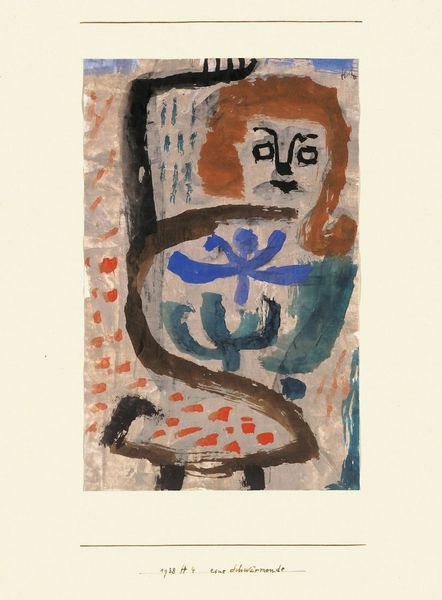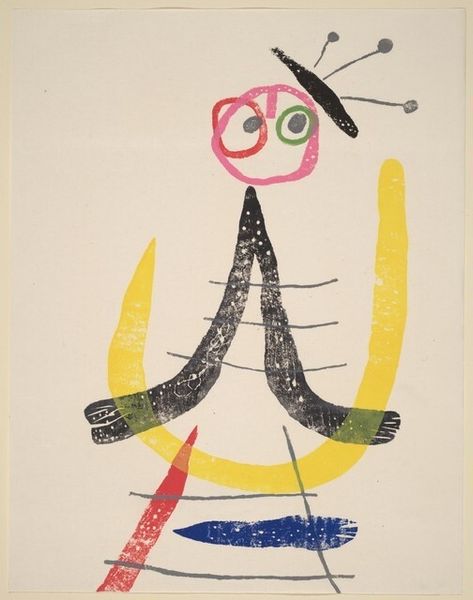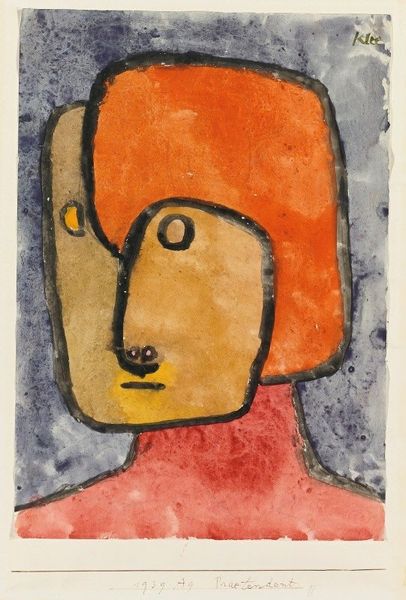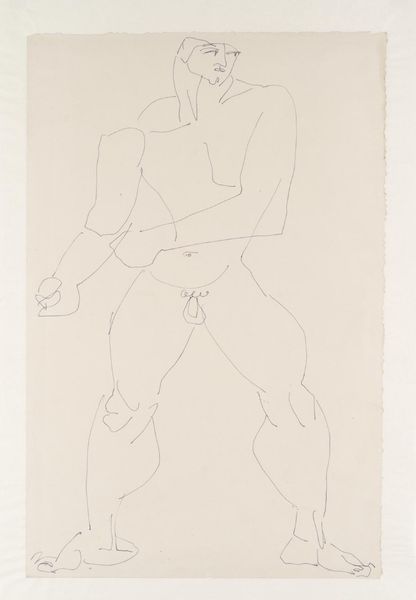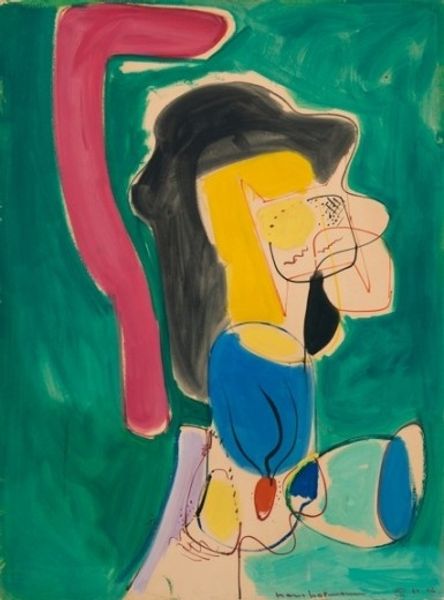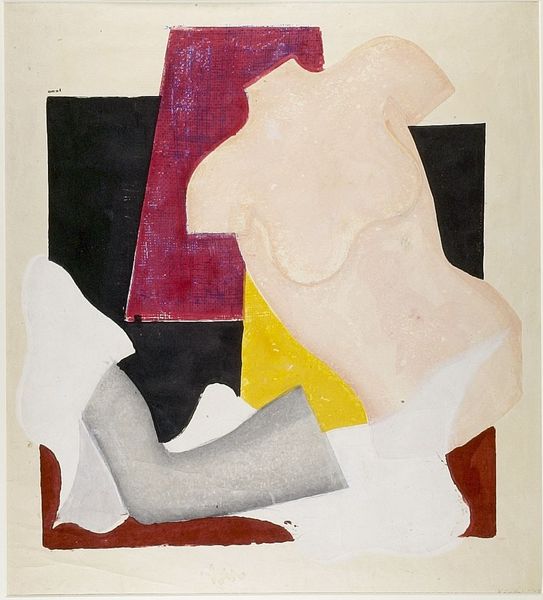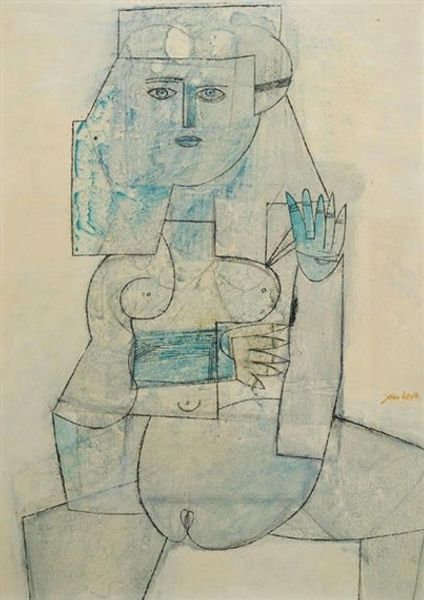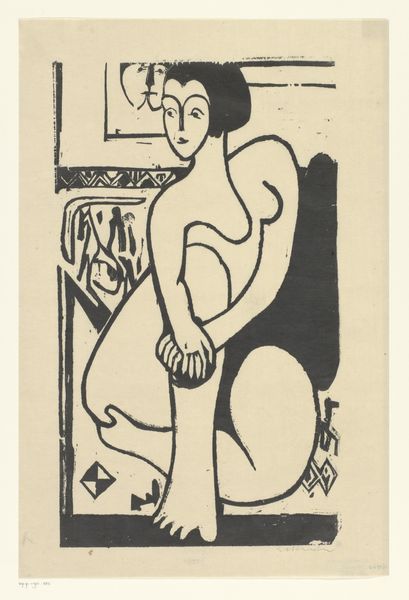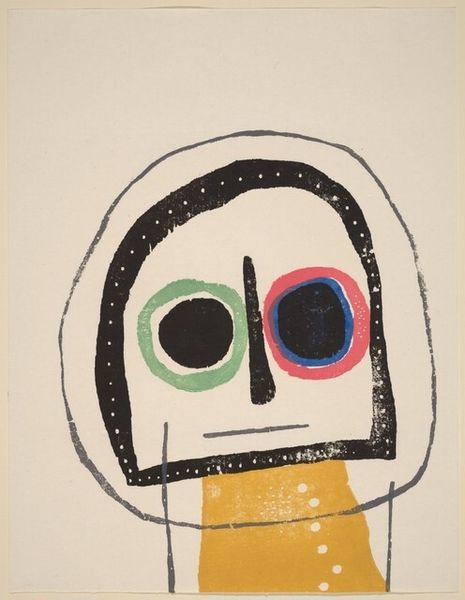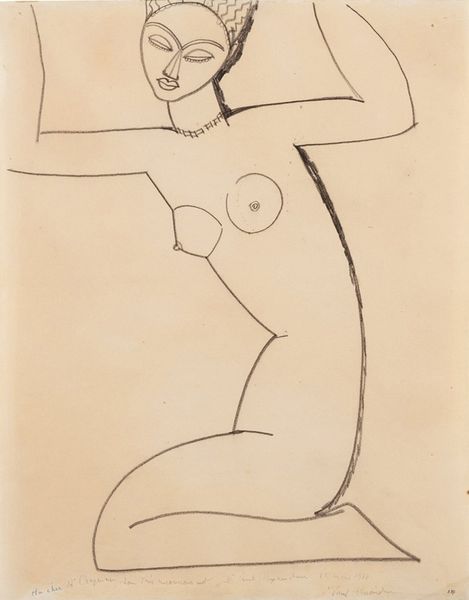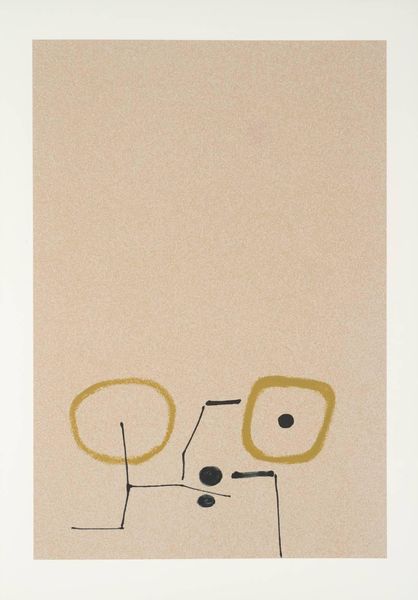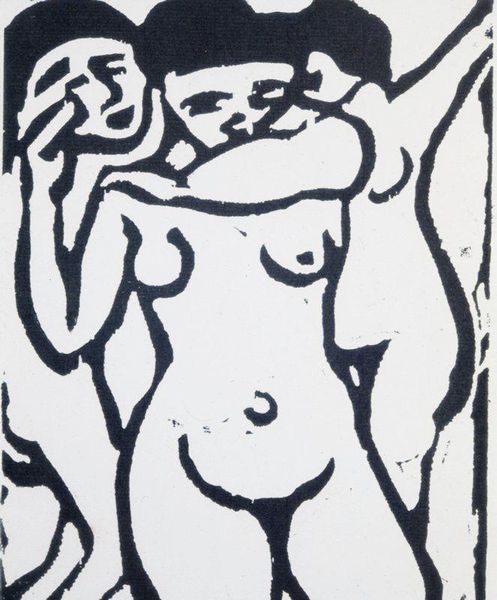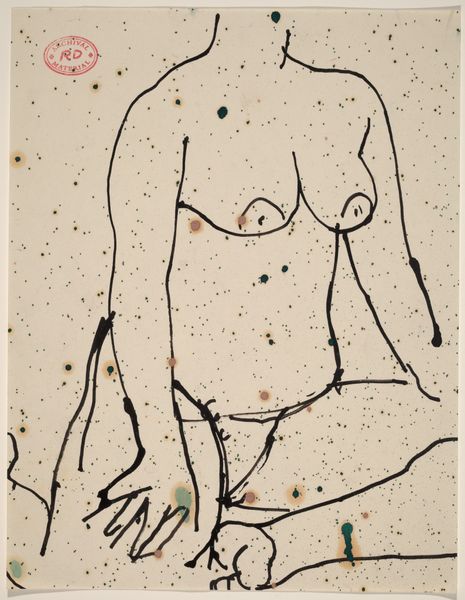
Copyright: Public Domain: Artvee
Editor: Here we have Paul Klee’s "The Girl in the North," made around 1939 with watercolor. It feels both playful and unsettling with the simple lines that almost hide the deeper meanings, almost childlike… What do you see in this piece? Curator: Considering the context of 1939, right before World War II, Klee, who had already been dismissed from his teaching position by the Nazis, created this portrait, "The Girl in the North." How can we understand the impact of sociopolitical forces in it? What do you make of this tension between childlike simplicity and impending darkness? Editor: Well, the “childlike simplicity” seems… almost like a mask. Maybe Klee's using naiveté to shield himself or the viewer from the political unrest of that time. I notice the geometric forms of the eyes. Curator: Absolutely. The abstracted, geometric features contribute to that feeling, don’t they? It is like Klee’s reflecting on the vulnerability of innocence amidst authoritarianism. Think about the positioning of the figure, frontal and exposed. Do you see that as a form of resistance, maybe? Editor: Resistance through… confrontation, maybe? Rather than hiding, she's there, forcing us to look. Although simplified, this depiction reflects on cultural anxieties regarding innocence, representation, and the looming war. Curator: Precisely. Art often holds up a mirror, reflecting society’s tensions and desires. Thinking about how Klee addresses the looming threat of war in "The Girl in the North," through color, and abstraction has been a revealing reflection on the precarity of identity during conflict. Editor: Yes, seeing how even simple art can express cultural unrest of its time is striking.
Comments
No comments
Be the first to comment and join the conversation on the ultimate creative platform.
